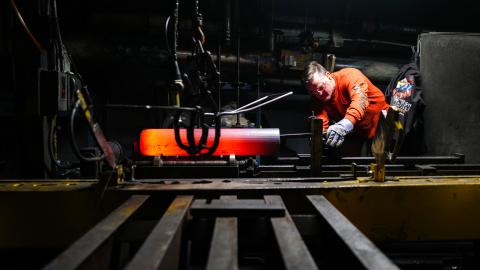Few topics have been more distorted by politicians and media than claims about the criminal justice system in its various forms. When the offense involves illicit drugs (use, possession, or trafficking), the distortion becomes pronounced. In large measure, a complicated set of data have been made even more difficult to grasp because of tendentious (and often false) assertions forwarded by drug legalization and criminal justice reform advocates, who seek to advance their own “reforms” by first misrepresenting the criminal justice facts.
President Obama’s remarks during a speech to the NAACP on July 14, 2015, are representative of the misinformed rhetoric: “Over the last few decades, we’ve also locked up more and more non-violent drug offenders than ever before, for longer than ever before. And that is the real reason our prison population is so high.”
These and other myths are harmful because they are now transforming into misguided policy proposals that put the public at risk. What follows are the most commonly heard myths and the facts that refute them:
Myth: America’s prisons are filled with inmates who merely used or possessed illegal drugs.
Fact: As a rule, Americans do not go to prison for first-time, simple possession offenses. Just 3.6 percent of state inmates and a mere 0.9 percent of federal inmates are in for drug possession offenses (for any drug, to include heroin, cocaine, or methamphetamine), with the vast majority of these inmates having long prior rap sheets or having plead down from more serious charges. Even accounting for these factors, there were only an estimated 75 inmates sentenced to the federal system in 2014 for marijuana possession.
Myth: Drug offenders make up the majority of America’s current prison population.
Fact: Just 20 percent of sentenced inmates in the combined federal and state prison systems (303,800 of 1,508,636) are in for a drug offense as their primary offense. In 2014, of those entering the federal system -- where the higher percentage of inmates are in for drug offenses -- 32 percent were entering for drug offenses, with 97 percent of those being trafficking convictions.
Myth: __Those incarcerated for non-violent drug offenses have driven the increase in America’s prison population.__
Fact: It can be debated that spreading deadly, addictive substances in the community is a “non-violent” offense, but regardless, this charge is abjectly false. The percentage of state prison inmates with a drug offense as their primary offense peaked in 1990 at 22 percent It now stands at 16 percent. There is no support in the data for the assertion that convictions for drug use, possession, or trafficking are primarily responsible for the sharp increases in either state or federal prison inmates over the past few decades.
Myth: Most inmates serving long drug sentences are not dangerous and pose no threat to the public.
Fact: Recidivism (ex-prisoners reoffending) poses a substantial threat to the public. According to a Bureau of Justice Statistics study, 77 percent of drug offenders released reoffended in five years (78 percent of possession offenders and 75 percent of trafficking offenders), with 25 percent of these “non-violent” drug offenders’ recidivating offenses being violent crimes. It should be remembered that these were only the crimes committed for which there was an arrest.
Myth: Most drug offenders are only hurting themselves.
Fact: Drug use is a major factor in the commission of crimes. Twenty-eight percent of state prison inmates sentenced for violent crimes were using drugs at the time of their offense. For all state prisoners, 69 percent used drugs regularly prior to their conviction. One quarter of federal inmates committed their offenses under the influence of illicit drugs.
Myth: The courts lock too many people up for drug offenses when what they really need is treatment.
Fact: The criminal justice system has traditionally been the greatest referral source for those entering drug treatment. Those struggling with the disease of addiction often need the threat of real, court-imposed consequences to be motivated to get the help they need. The over 3,400 Drug Courts currently in operation nationwide are a testament to the desire of law enforcement to end the cycle of addiction and crime by diverting non-violent drug offenders into treatment as a first resort. These programs divert offenders into supervised treatment instead of jail, giving them an opportunity to avoid criminal records through successful program completion.

















